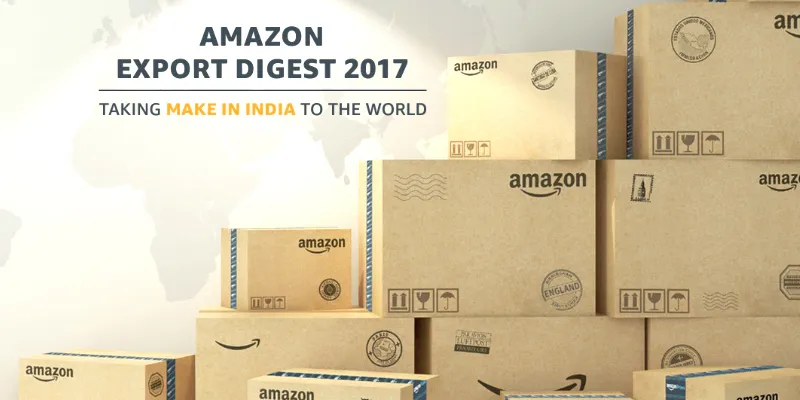Why is the South lagging in Amazon India’s global selling programme?
According to The Amazon Export Digest 2017, the retail giant’s global selling programme has witnessed an aggressive uptick in East, West, and North India, but has not been able to see similar success in South India.
It has been three years since Amazon India launched its global selling programme, which allows Indian sellers to sell their wares across the globe. Since then, Amazon has been encouraging more sellers from across the country to be a part of this programme, and expand the “Made-in-India” product portfolio on its marketplaces internationally.
How has the platform been performing, especially at a time when exports are getting a boost from the rupee depreciation, and as the government has taken various proactive measures to promote exports?

The Amazon Export Digest 2017, titled “Taking Make in India to the World” gives insights on the performance of the global selling platform. The report said the platform saw a 224 percent growth in the number of Indian exporters and 500 percent growth in Indian products on Amazon’s international marketplaces in 2017.
But there is a catch. The high growth in terms of export numbers for India was not proportionate across the geography of India. Amazon India’s global selling programme is witnessing an aggressive uptick in East, West, and North India, but has not been able to see a similar level of success in the southern part of India.
The report pointed out that there was 271 percent growth in East India-based products, 563 percent growth in North India-based products, and 187 percent growth in West India-based products, but there was only 52 percent growth in South India-based products. Similarly, the growth in South India and East India-based exporters was lesser than the North and West. Neither the report nor Amazon provided absolute numbers in terms of sellers based in various zones.
Slow in the South?
So why have sellers from South India not been able to capitalise on the platform?
Amazon defended the low numbers of sellers from South India by saying its global selling platform has more manufacturers in South India vis-à-vis North India where the platform has more re-sellers (who source from various manufacturers).
An Amazon India spokesperson said, “Our programme currently has a mix of manufacturers, resellers and aggregators selling their products globally. Typically, the selection listed by manufacturers is curated and customised as per the demand in the destination marketplace, hence the number of products listed by them (manufacturers) is relatively lower. On the other hand, resellers or aggregators source their products from multiple manufacturers and so the number of products listed by them is higher.”
The spokesperson added, “Given that we have a higher number of manufacturers from South and East regions as compared to North and West, there is a variation in the seller spread. Furthermore, categories like home textile and leather goods majorly offered by South-based sellers, have lesser number of SKUs (stock keeping units) as compared to categories like apparel and jewellery, which have a larger selection and are dominated by North and West-based sellers. These factors are the major contributors to the dissimilarity in the number of sellers and products offered by regions across the country.”
The report stated that the states with the maximum number of exporters on the platform are Delhi, Rajasthan, Maharashtra, Gujarat, and UP. The cities with the maximum number of international exporters are Delhi, Mumbai, Bengaluru, Hyderabad, and Kolkata. From the non-metro cities, Indore, Surat, Ahmedabad, Ghaziabad, and Pune featured as the cities with the most international exporters on the platform.
According to a joint Ficci and IIFT report last year, the revenue from cross-border trade in the B2C segment is likely to increase from the $500 million to $2 billion by 2020. Compared to domestic e-commerce market, the export market through e-commerce is minuscule.
Amazon India’s global selling programme currently has more than 32,000 Indian merchants selling about 90 million products to customers across 11 countries. In April this year, Amazon also started B2B selling for its global selling programme to provide a platform to Indian sellers to export their merchandise to business customers outside India.







